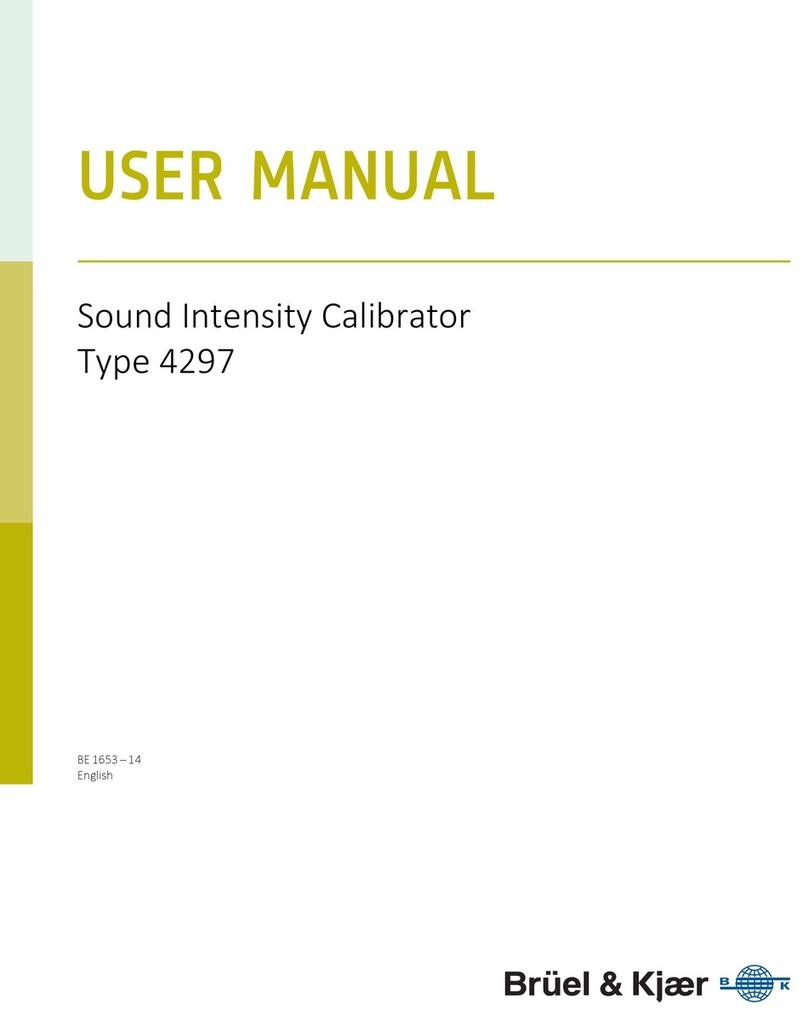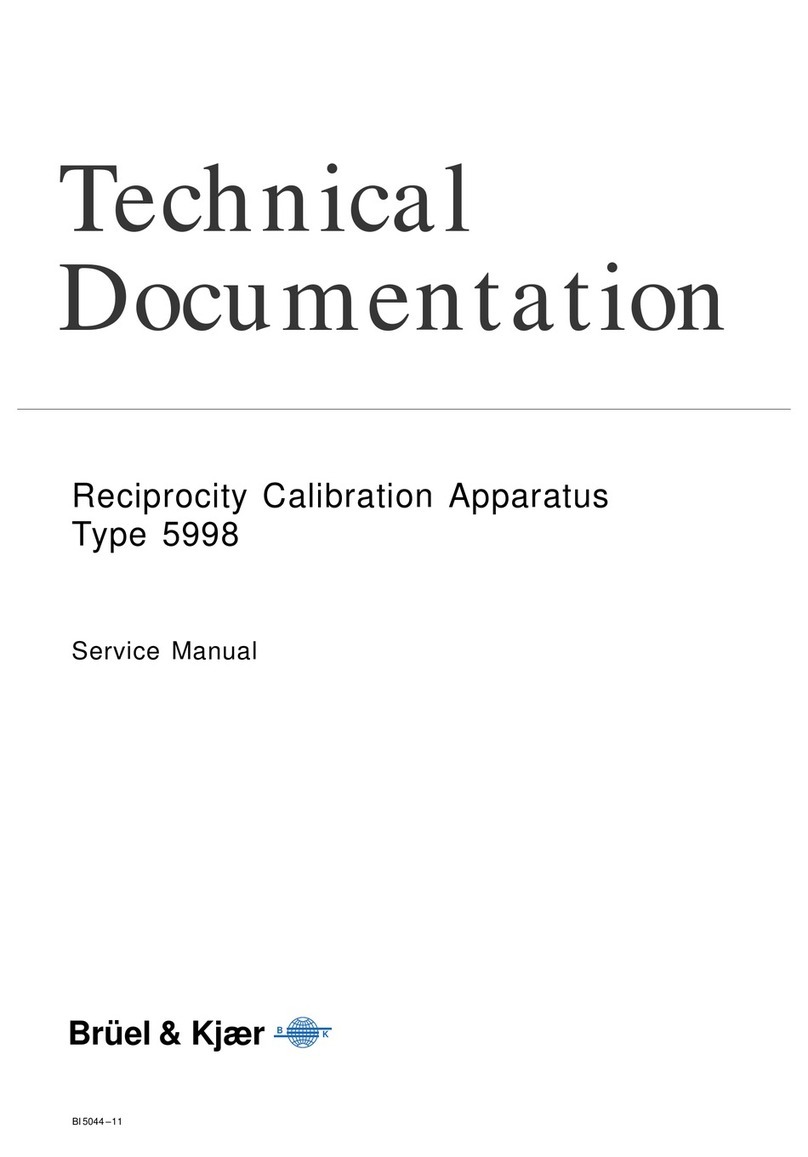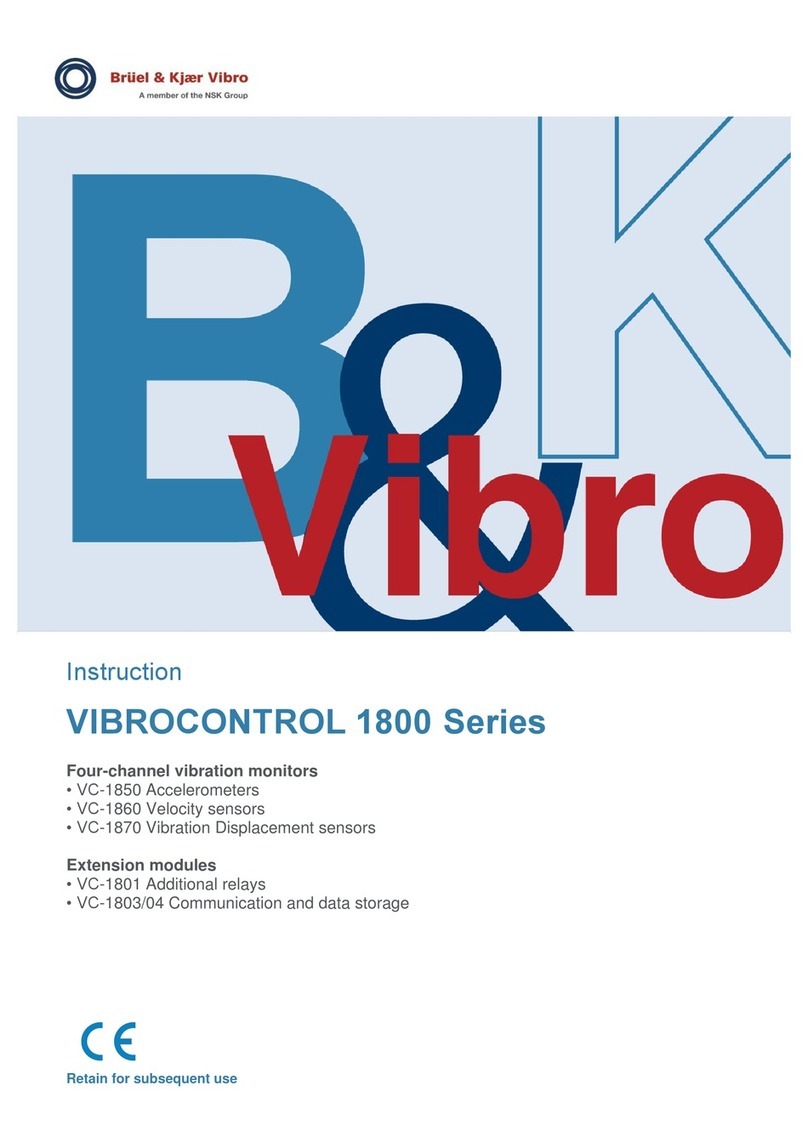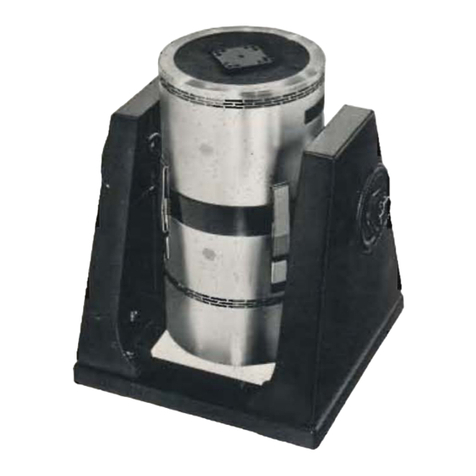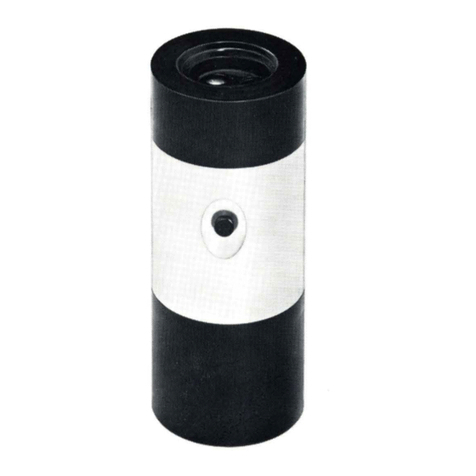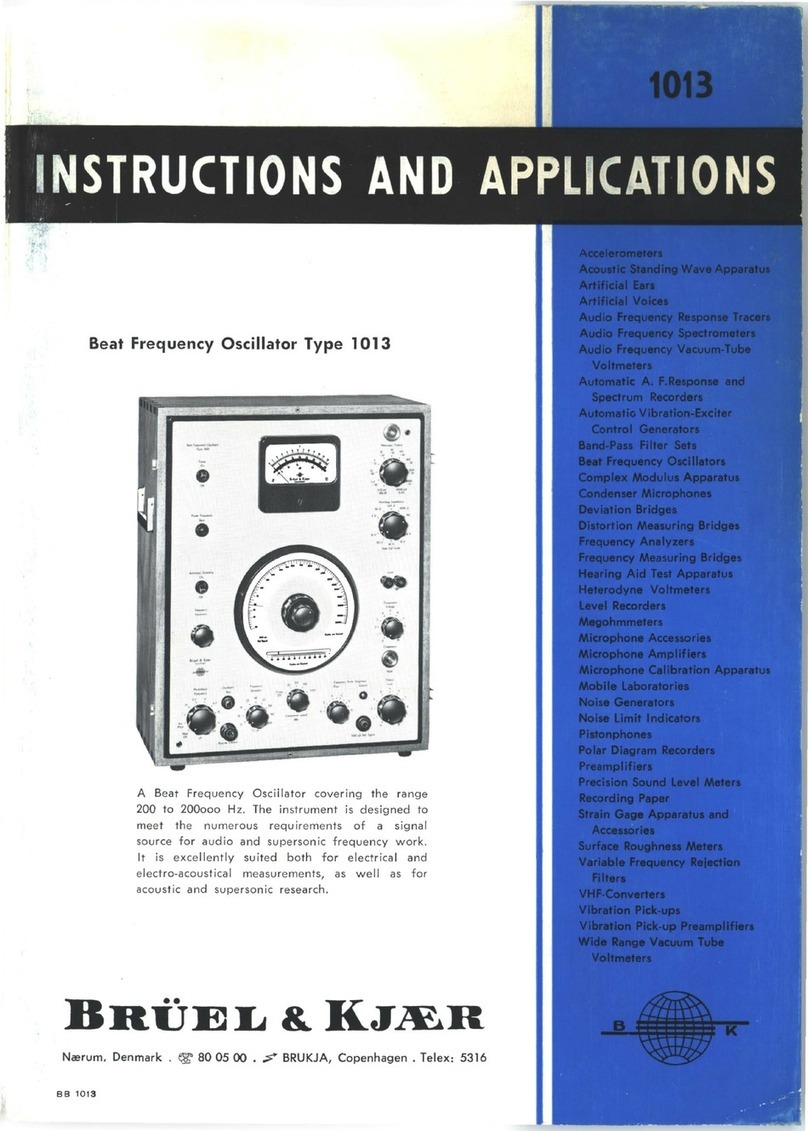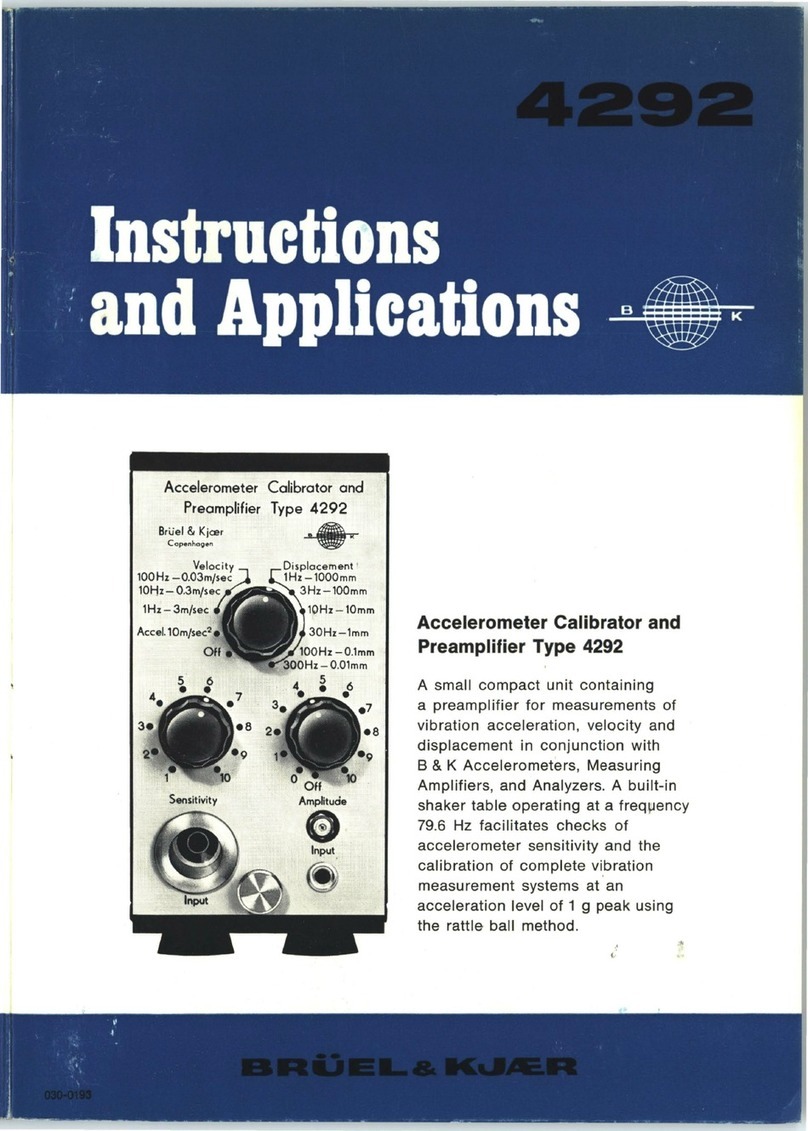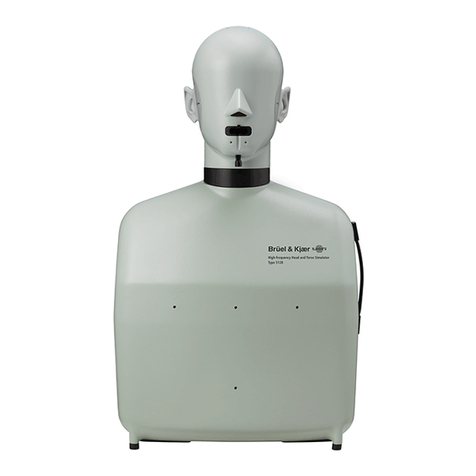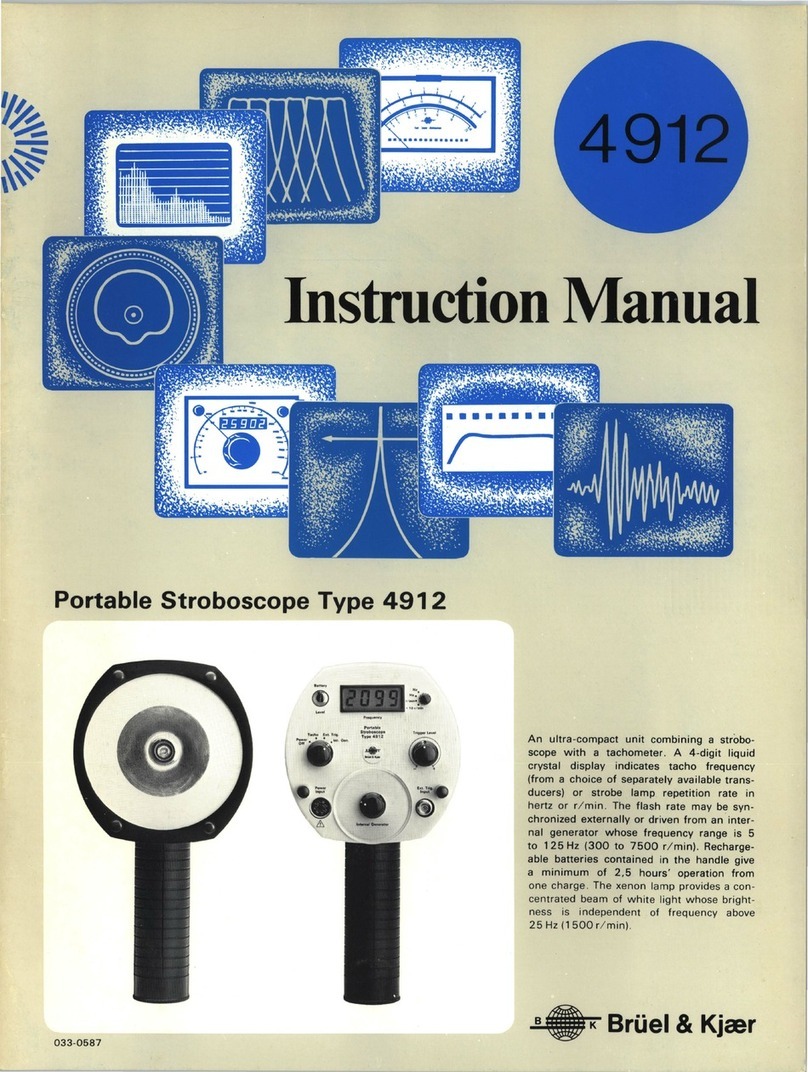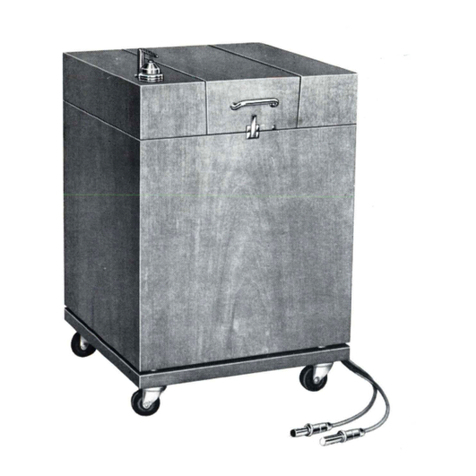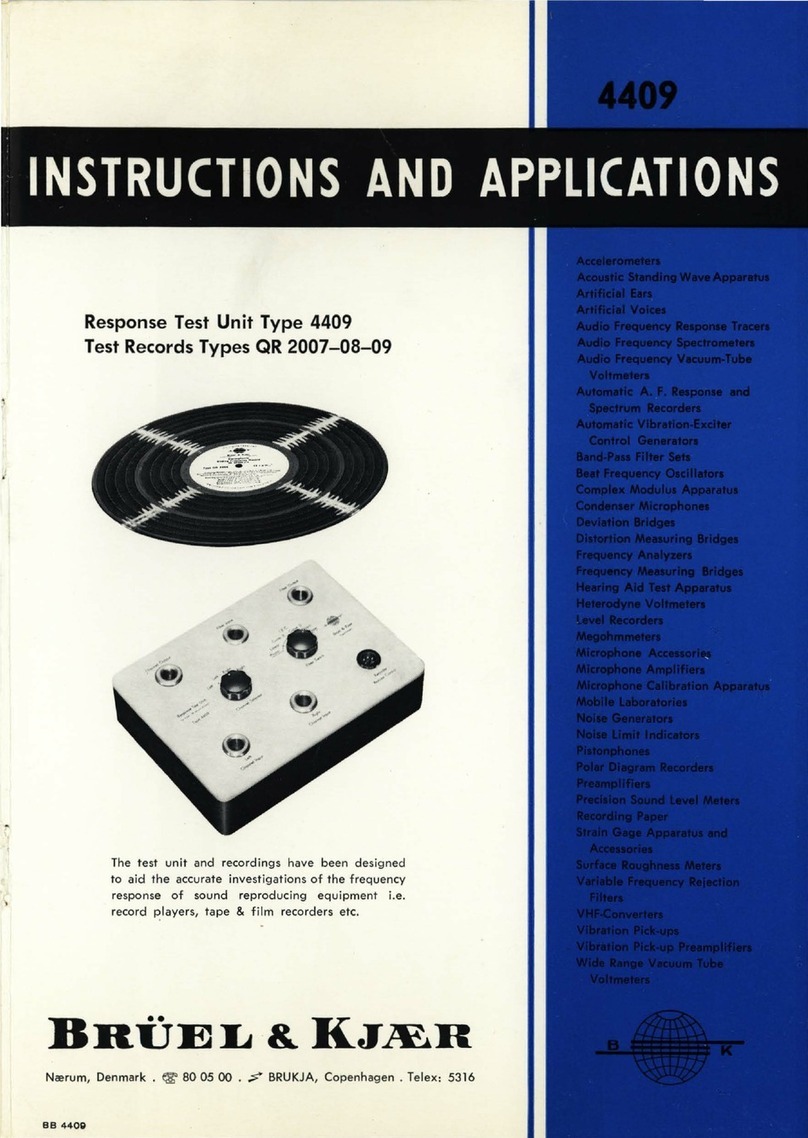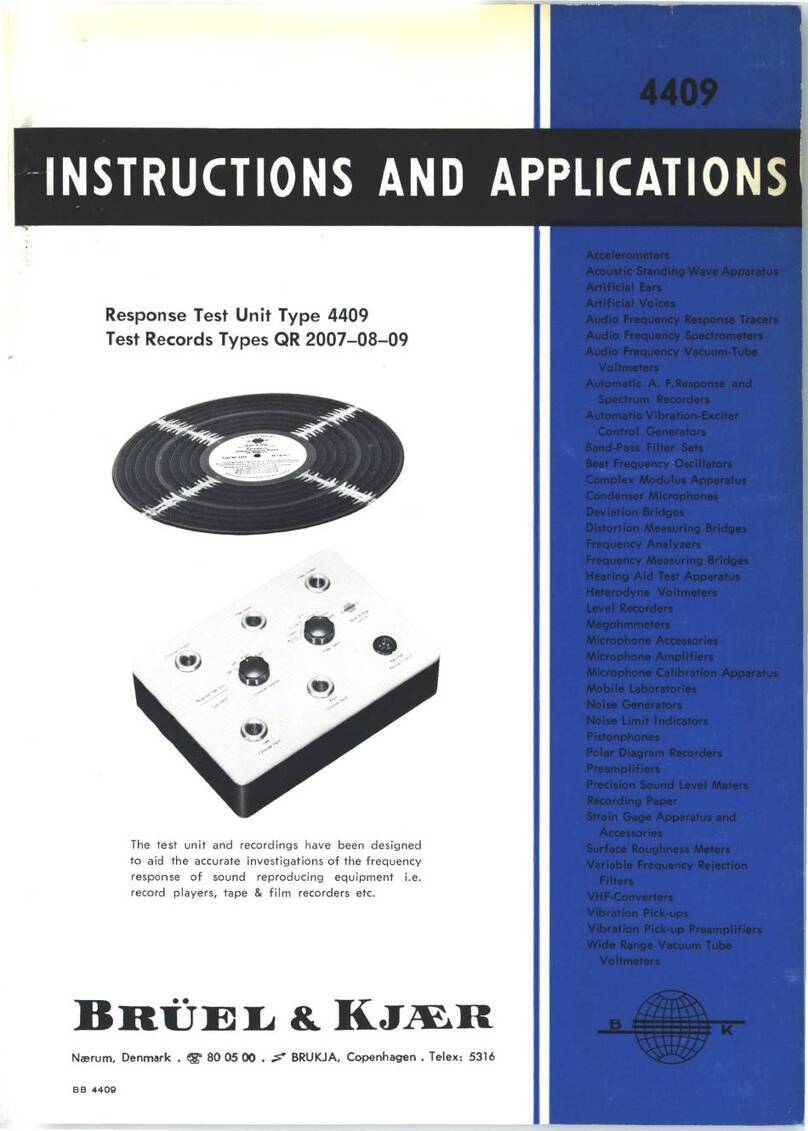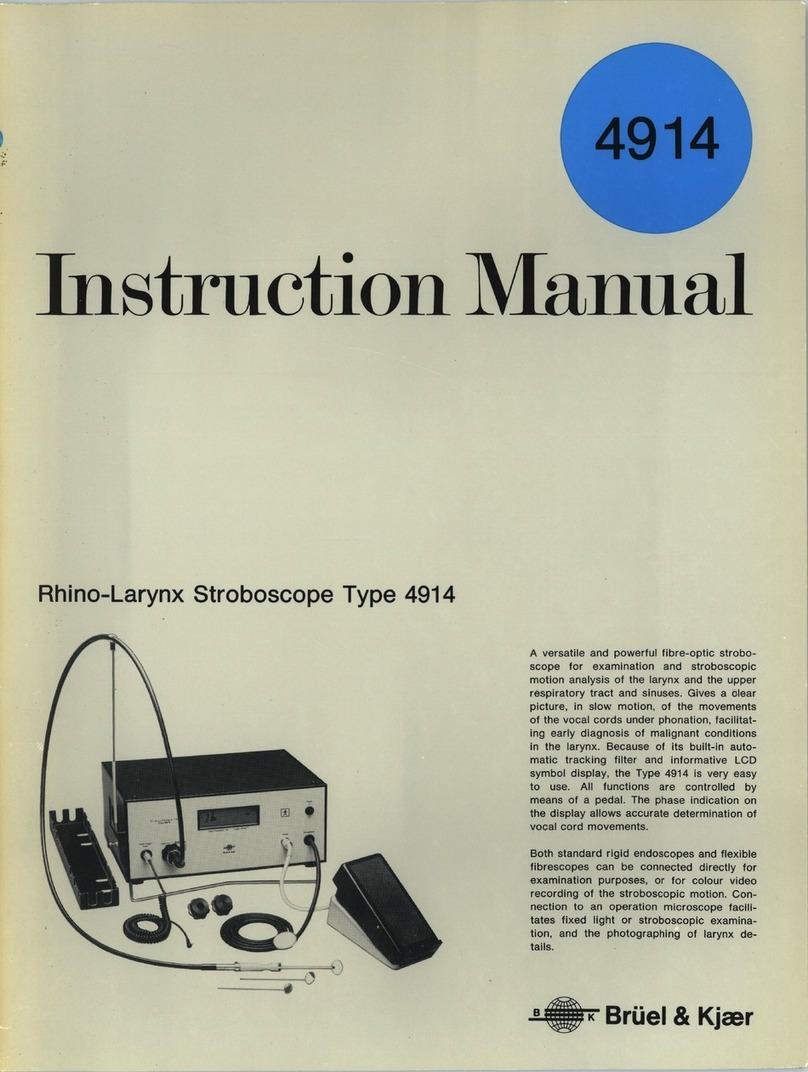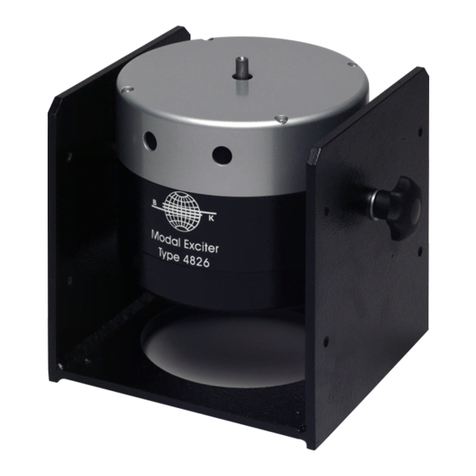
4
fectiveness of hearing protectors on
noise incident at different angles is
also easy to investigate.
Hearing Aid Characteristics
Both in-the-ear and behind-the-ear
hearing aids can be evaluated with
Type 4128. Two ear-mould simulators
are supplied with the 4128 for testing
hearing aids where individually-
made ear-moulds are normally used.
The mouth simulator in Type 4128 is
very useful for developing multi-mi-
crophone noise-cancelling hearing
aids.
Simulated insertion gain, simulat-
ed directional responses and in-situ
maximum output can be measured
using the Head and Torso Simulator,
as described in IEC Publication
118–8 (1983) Methods of Measure-
ment of Performance Characteristics
of Hearing Aids under Simulated In-
situ Working Conditions.
Microphone Measurement
When making measurements on mi-
crophones, Type 4128 can closely sim-
ulate the interaction between the
mouth, head, body and microphone.
Its mouth simulator is an ideal sound
source for applications in research,
development and evaluation of a va-
riety of microphones. In particular,
you should use the 4128 with close-
talking, noise-cancelling and lavalier
types, where the characteristics of
the human voice must be reproduced
accurately and the influence of the
head and body is very important.
Speech Intelligibility Investigation
You can investigate the quality of
speech intelligibility in a room using
the Head and Torso Simulator, to-
gether with the Brüel & Kjær Speech
Transmission Meter Type 3361. This
quantifies speech intelligibility based
on the RASTI (RApid Speech Trans-
mission Index) method. Type 4128 is
incorporated in the system as trans-
mitter, simulating the speaker, and
can be driven from the transmitter
part of the system. The RASTI calcu-
lation is performed by the receiving
part of the 3361.
LISTENER FREQUENCY RESPONSE:
Conforms to ITU-T Rec.P.58 for measurements
on telecommunications devices and to IEC959
and ANSI S3.36-1985 for measurements on air
conduction hearing aids
EAR SIMULATOR:
The output from the ear simulator is via a built-
in 7-core 3m cable (2.3m from the bottom of the
torso) terminated with a standard plug for con-
nection to a preamplifier input socket of
Brüel&Kjær Power Supplies, Analyzers, etc. The
Ear Simulator complies with IEC711 and
ANSIS3.25 standards
Sensitivity: 9mV/Pa(–41dB re 1V/Pa) at 250Hz
3% distortion level:160dB re 20µPa at ear-
drum position
LEFT-EAR TO RIGHT-EAR TRACKING:
±1dB up to 5kHz, ±3dB up to 8kHz (measured
using the same Ear Simulator)
PINNA SIMULATORS:
Dimensions similar to those specified in ITU-T
Rec.P.58, IEC959 and ANSIS3.36-1985. Minor
adjustments in the dimensional details have
been made which enable the 4128 to conform
with the acoustic specifications of these docu-
ments in the frequency range 100Hz to 8kHz.
Types 4158 and 4159 are supplied with calibrat-
ed pinna simulators. An additional pair of uncal-
ibrated soft pinna simulators are supplied with
the 4128
MOUTH SIMULATOR:
Input to mouth simulator via 0.75m cables (0.2m
from the bottom of the torso) terminated with
banana-sockets
Sound pressure distribution conforms to: ITU-T
Mouth opening:W×H: 30×11mm
(42×16mm with mouth adaptor removed)
Equivalent lip plane position:6mm in front of
the sound radiation opening
Continuous output level at MRP:
Min. 110dB SPL, 200Hz to 2 kHz
Min. 100dB SPL, 100Hz to 8kHz
Distortion (harmonic components up to
8kHz) at 94dB SPL:
<2%, 200Hz to 250
<1% >250Hz
Max. average input power:10W max. continu-
ous average power (at 20°C (68°F))
Max. pulsed input power:50W for 2 seconds
(limited by protection circuit)
Loudspeaker impedance:4Ω
Loudspeaker diameter:80mm (3.1in)
(all mouth-simulator performance parameters
are measured at 25mm from the equivalent lip
plane (ITU-T MRP))
DIMENSIONS:
The main dimensions comply with the dimen-
sional requirements of ITU-T Rec.P.58 and the
reports from IEC959 and ANSIS3.36-1985
Total height, head and torso:695mm (27.4in)
Torso: Height:460mm (18in)
Width:410mm (16in)
Depth:183mm (7.2in)
External neck diameter: 112mm
(4.4in)
Head Angles: Vertical or 17°
WEIGHT: 9kg (20lb)
COMPLIANCE WITH STANDARDS:
CE-mark indicates compliance with: EMC Directive and Low Voltage Directive.
Safety EN 61010–1 (1993): Safety requirements for electrical equipment for
measurement, control and laboratory use.
EMC Emission EN 50081–1 (1992): Generic emission standard. Part 1: Residential,
commercial and light industry.
CISPR22 (1993): Limits and methods of radio disturbance characteristics of
information technology equipment. Class B Limits.
FCC Class B limits.
EMC Immunity EN 50082–1 (1992): Generic immunity standard. Part 1: Residential,
commercial and light industry.
Note: The above is guaranteed using accessories listed in this Product Data
sheet only.
Temperature IEC68–2–1 & IEC68–2–2: Environmental Testing. Cold and Dry Heat.
Operating Temperature: –5°C to +40°C
Storage Temperature: –25°C to +70°C
Humidity IEC68–2–3: 90% RH (non-condensing at 40°C)
Mechanical IEC68–2–6: Vibration: 0.3mm, 20m/s2, 10–500Hz
IEC68–2–27: Shock: 1000m/s2
IEC68–2–29: Bump: 1000 bumps at 250m/s2
Specifications 4128
